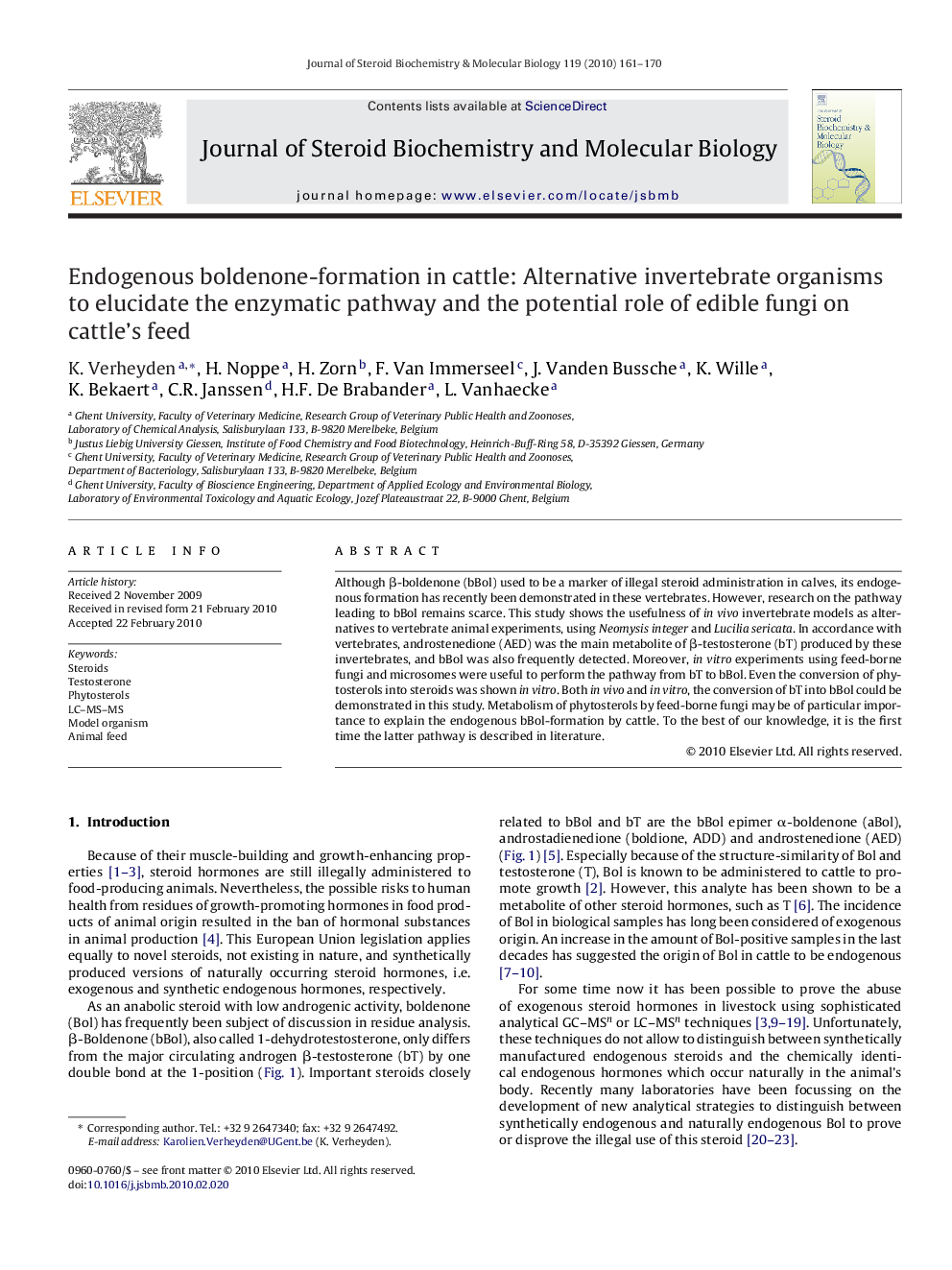| کد مقاله | کد نشریه | سال انتشار | مقاله انگلیسی | نسخه تمام متن |
|---|---|---|---|---|
| 1992032 | 1541047 | 2010 | 10 صفحه PDF | دانلود رایگان |

Although β-boldenone (bBol) used to be a marker of illegal steroid administration in calves, its endogenous formation has recently been demonstrated in these vertebrates. However, research on the pathway leading to bBol remains scarce. This study shows the usefulness of in vivo invertebrate models as alternatives to vertebrate animal experiments, using Neomysis integer and Lucilia sericata. In accordance with vertebrates, androstenedione (AED) was the main metabolite of β-testosterone (bT) produced by these invertebrates, and bBol was also frequently detected. Moreover, in vitro experiments using feed-borne fungi and microsomes were useful to perform the pathway from bT to bBol. Even the conversion of phytosterols into steroids was shown in vitro. Both in vivo and in vitro, the conversion of bT into bBol could be demonstrated in this study. Metabolism of phytosterols by feed-borne fungi may be of particular importance to explain the endogenous bBol-formation by cattle. To the best of our knowledge, it is the first time the latter pathway is described in literature.
Journal: The Journal of Steroid Biochemistry and Molecular Biology - Volume 119, Issues 3–5, April 2010, Pages 161–170